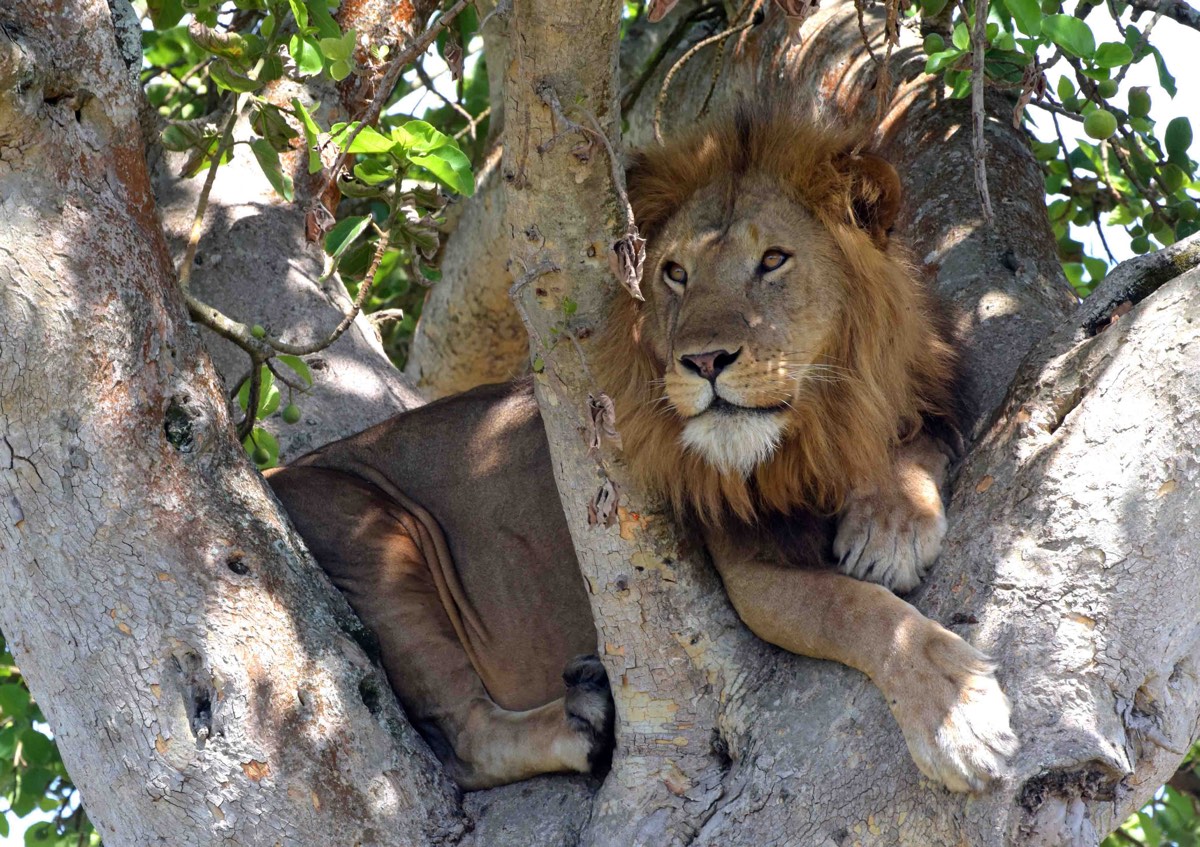Famed Tree-Climbing Lions Running Low on Prey

A rare group of tree-climbing lions living in Uganda must range farther and farther to find enough prey to survive, a new study found.
The research discovered that the lions of the country's Ishasha district have expanded their ranges and shrunk the size of their prides since the 1970s. The lions live in Queen Elizabeth National Park and are one of only two populations of lions in the world that climb trees daily, according to the park. (The other group lives in a park in Tanzania.) The lions may climb to avoid the heat at ground level or to escape from biting flies. Their unusual behavior makes them a major tourist draw for Uganda.
Poaching in the park has slashed the biomass, or total weight, of prey animals for the lions, like antelope, down from 50,7000 lbs. per 0.6 square miles (23,000 kilograms per square kilometer) in the 1970s to just 17,750 lbs. per 0.6 square miles (8,050 kg per square km) today, researchers from the Wildlife Conservation Society wrote in the Journal of East African Natural History. [In Photos: The Biggest Lions on Earth]
Home on the range
To find out how the animals have adapted, the researchers fitted radio collars to 12 lions from the two prides in Ishasha and followed the big cats between 2005 and 2010. The scientists used the radio collar data to determine the lions' home ranges, calculating the distances roamed both for the pride as a whole and for individual lions.
The data showed that the ranges of the prides today vary between 18.7 square miles (48.5 square km) and 22.6 square miles (58.5 square km). In the mid-1970s, Ishasha lions stuck a little closer to home: The northern pride had an average range of 13 square miles (34 square km), while the southern pride stayed within an area of 14.7 square miles (38 square km), the researchers said. These are already small range sizes for lions, the researchers wrote; in the Serengeti, lions sometimes roam over 155 square miles (400 square km).
Successful hunting
The Ishasha lions' favorite meal, comprising between 57 percent and 62 percent of their kills, was the Uganda kob, a reddish-brown antelope whose males sport striped horns. The lions preferred grassland and wooded grassland areas, probably because kob are most abundant there and hunting is easier than in densely vegetated areas, the researchers said.
Pride sizes have shrunk slightly since the early 1980s, the researchers found. In 1981, the southern pride was up to 23 individuals strong, including up to 14 adults at once; today, the southern pride had as many as 22 individuals at once but only 11 adults at any given time. A pride that used to roam immediately to the north of today's southern pride no longer exists, probably because declining prey numbers made it impossible to survive in that area, the researchers reported.
Get the world’s most fascinating discoveries delivered straight to your inbox.
"Some of the money generated from tourism to [see] these lions needs to be invested in, firstly, improving prey biomass density and in, secondly, ensuring that grassland and open woodland habitat is maintained or increased in this part of the park," the scientists concluded.
Original article on Live Science.

Stephanie Pappas is a contributing writer for Live Science, covering topics ranging from geoscience to archaeology to the human brain and behavior. She was previously a senior writer for Live Science but is now a freelancer based in Denver, Colorado, and regularly contributes to Scientific American and The Monitor, the monthly magazine of the American Psychological Association. Stephanie received a bachelor's degree in psychology from the University of South Carolina and a graduate certificate in science communication from the University of California, Santa Cruz.


